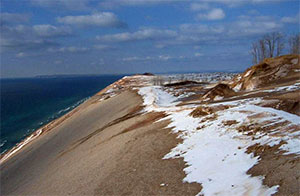The Wilderness Act

The wilderness act passed on September 3, 1964 – 50 years ago this year. After eight years of congressional hearings and 66 versions of the bill, Howard Zahniser’s efforts passed in the U.S. Senate and House of Representatives.
Upon signing the Wilderness Act, President Johnson said:
If future generations are to remember us with gratitude rather than contempt, we must leave them something more than the miracles of technology. We must leave them a glimpse of the world as it was in the beginning, not just after we got through with it.
What comprises the National Preservation System?
Today, the National Preservation System, is a speckled landscape comprising of approximately 235 million acres of federal, permanently protected, wildlands. That number encompasses 110 million acres designated by 662 wilderness areas – wild places from all regions of the country.
Think National Forests, Bureau of Land Management lands, Fish and Wildlife Service lands, National Monuments, National Recreation Areas, National Conservation Areas, Historic and Scenic Trails, and Wild and Scenic Rivers.
Definition of Wilderness?
By the very definition of wilderness, areas shall be devoted to the public purposes of recreational, scenic, scientific, educational, conservation and historical use. Established for the permanent good of the whole people, The Wilderness Act is eloquently and descriptively written with a fervent purpose we are unlikely to ever again witness through our legislative process.
The act itself outlines the definition of wilderness as follows:
A wilderness, in contrast with those areas where man and his works dominate the landscape, is hereby recognized as an area where the earth and its community of life are untrammeled by man, where man himself is a visitor who does not remain. An area of wilderness is further defined to mean in this Act an area of undeveloped Federal land retaining its primeval character and influence, without permanent improvements or human habitation, which is protected and managed so as to preserve its natural conditions and which (1) generally appears to have been affected primarily by the forces of nature, with the imprint of man’s work substantially unnoticeable; (2) has outstanding opportunities for solitude or a primitive and unconfined type of recreation; (3) has at least five thousand acres of land or is of sufficient size as to make practicable its preservation and use in an unimpaired condition; and (4) may also contain ecological, geological, or other features of scientific, educational, scenic, or historical value.
Want some trivia to share with your friends?
• The smallest wilderness area is the Pelican Island Wilderness in Florida – 5.5-acres;
• The largest wilderness area is Wrangell-Saint Elias Wilderness in Alaska – 9,078,675-acres;
• Wilderness exists in every state but six – Connecticut, Delaware, Iowa, Kansas, Maryland and Rhode Island;
• Nearly 95% of our wilderness areas are found west of the 100th meridian! and
• The newest wilderness area is Sleeping Bear Dunes Wilderness in Michigan (designated March 13, 2014) – 32,557-acres.
Photo Credit – National Park Service; Sleeping Bear Dunes Wilderness

